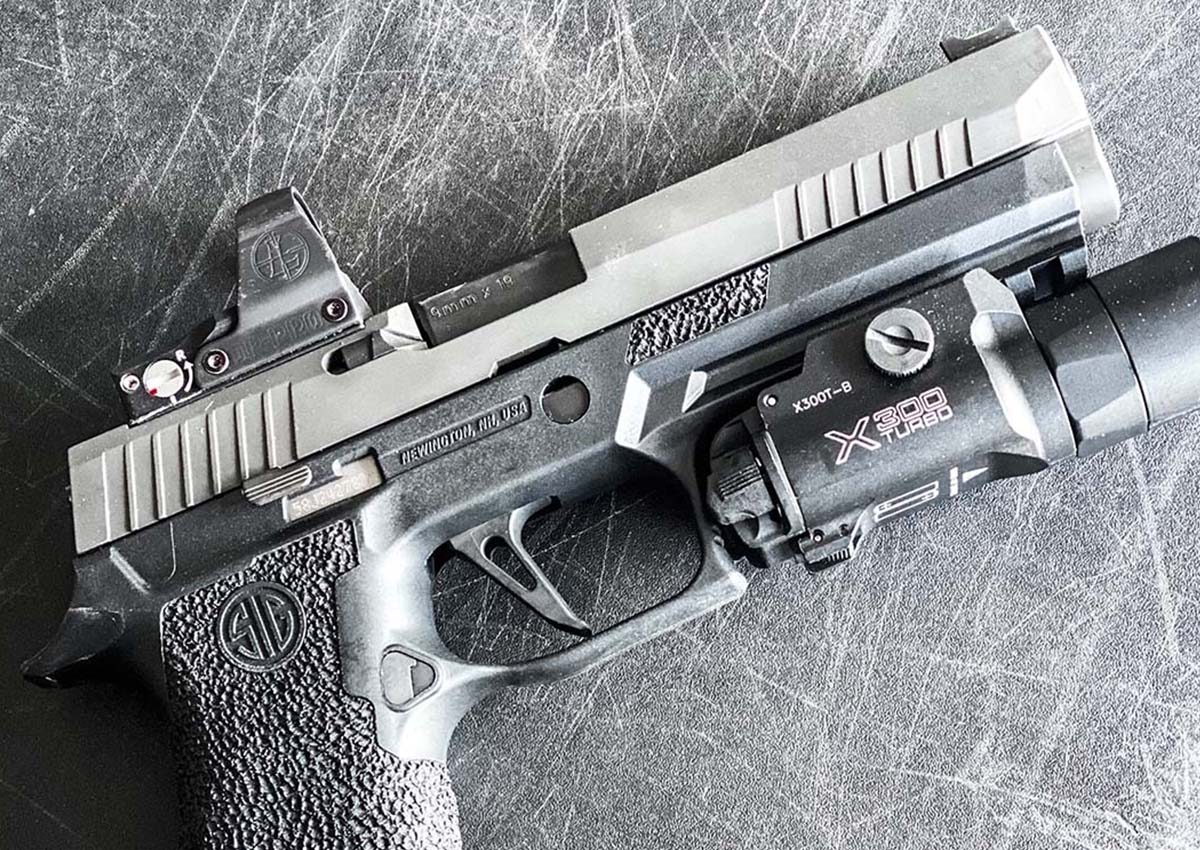The Best Baits for Bluegill and Other Panfish
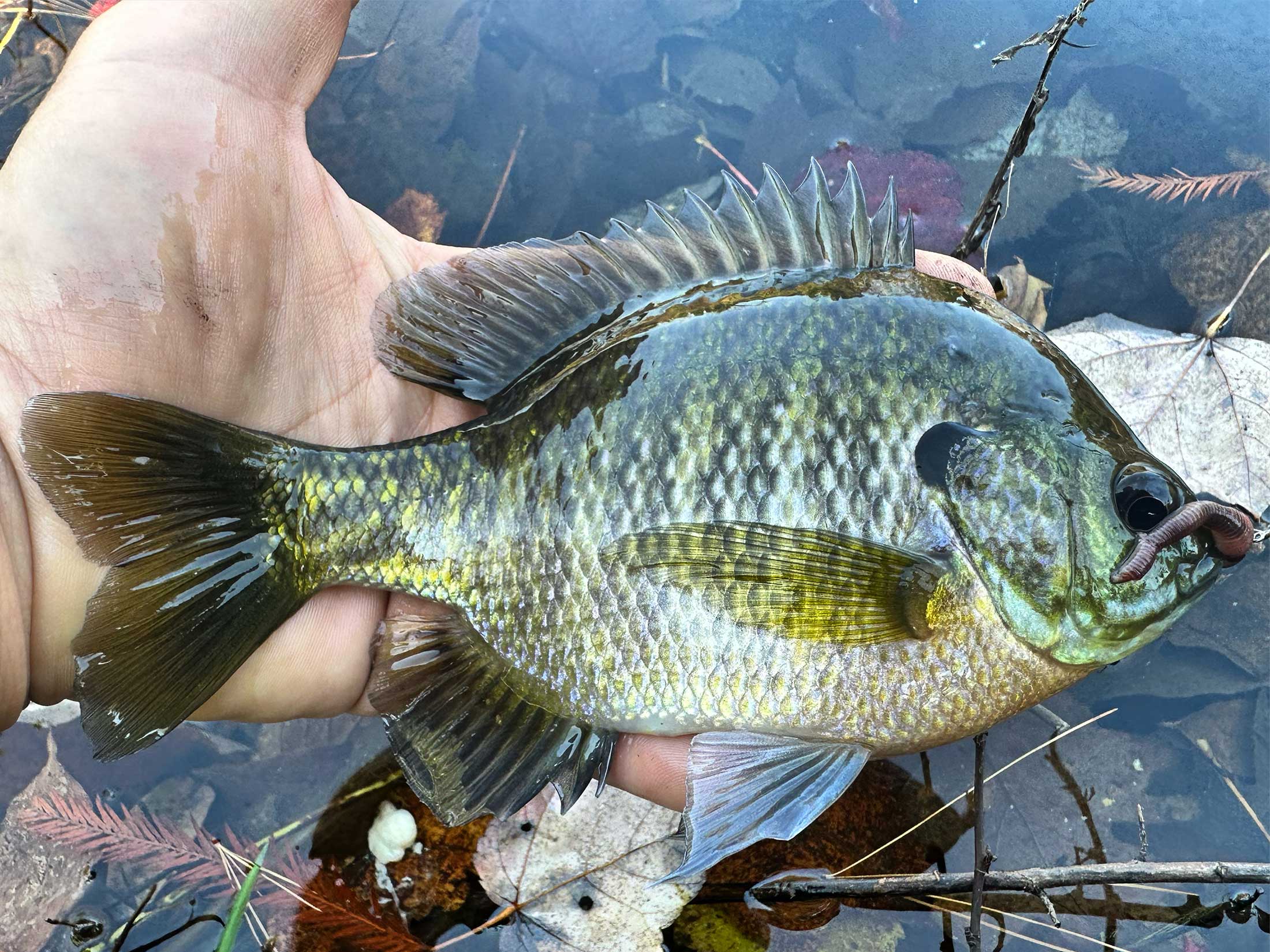
We may earn revenue from the products available on this page and participate in affiliate programs. Learn More ›
Available from one corner of the lower 48 to the other, bluegills are great for anglers of all ages. But bluegills belong to that unscientifically defined family of “panfish,” which is organized by the fact that all of its members are delicious.
Bluegills, longears, pumpkinseeds, redbreasts, crappies, and perch provide fodder for fish fries all over the country year. Of course, if you’ve got a big family to feed, you need to catch a lot. There are countless methods for getting it done with artificial lures and flies, but it’s hard to beat bait when targeting panfish. From live offerings that wiggle and squirm to sleepers borrowed from saltwater and your own pantry, here are our picks for the best baits for bluegills along with a bunch of other panfish species.
How I Picked the Best Baits for Bluegill and Other Panfish
As a lifelong angler I’ve fished for panfish all around the country. As the fishing editor of Outdoor Life I’ve spent time on the water with a lot of expert fishermen, many of which have their own little tips and tricks for catching panfish.
So for this story I’m including the tried and tested live bait options that are simple to rig and fish. But I’m also including a variety of artificial lures that have helped me put plenty of panfish in the livewell.
The Best Live Bait for Bluegill and Panfish
Garden Worms
Photo by Joe Cermele
See It
Best For: Sunfish, perch
It shouldn’t be a shock to see garden worms pop up first on our list. They are, after all, one of the most ubiquitous baits in fishing, appealing to species like trout, catfish, bass, and many others outside of panfish. But they also rank highest because of their availability. No matter where you live, you can usually find garden worms for sale easily, be it at a bait shop, hardware store, gas station, chain convenience store, or Wal-Mart. Of course, you probably also know where to find dirt, and if you’ve got dirt and a shovel, you’ve got free worms galore.
I’ve never met a member of the sunfish family that wouldn’t pounce on a bit of fresh garden worm dangling on a hook under a bobber. Likewise, they work great on a tiny jighead for yellow perch when you leave some worm trailing past the hook bend so it wiggles and flutters during the retrieve. Always remember to keep your garden worms on ice or, at minimum, in the shade as heat will quickly kill them and make them mushy.
Read Next: How to Catch Nightcrawlers for Bait
Mealworms
Best For: Sunfish
Mealworms are beetle larvae, and they’re available in several colors. Yellow and gold are the most common, but red mealworms are staples in many bait shops as well. Unlike garden worms, mealworms don’t mind the heat as much. They usually come packed in dry saw dust, and their tough shells make them heartier than other baits.
They are, however, much more rigid than a garden worm, so while they’ll catch species like yellow perch and crappies when used to tip a jig, they don’t add much extra action to the presentation. Sunfish don’t seem to mind, though. Whether fished under a bobber, on the bottom with the aid of a tiny split shot, or on a jig through the ice, any member of the sunfish family will snap them right up.
Wax Worms
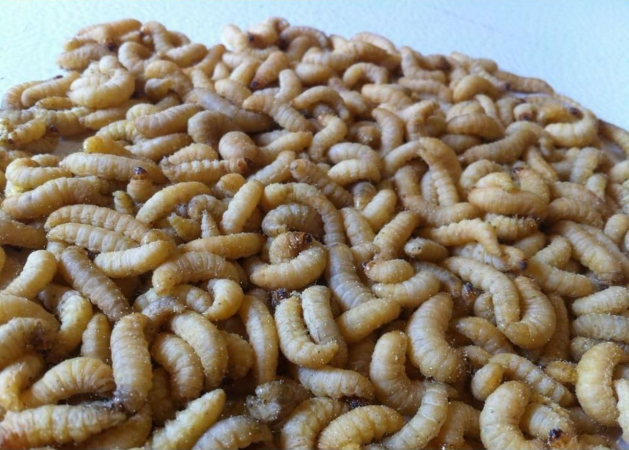
See It
Best For: Sunfish, perch, crappies
Sometimes referred to as “waxies,” these little white grubs are the larvae of wax moths. Though they will temp panfish any time of year, this bait is most associated with ice fishing, which means in certain regions they won’t be available in bait shops until the winter months. Why do they work so well through the ice? I’ve heard they have a more pungent aroma than mealworms, and their soft, squishy bodies seem to make cold fish hang on longer when they bite.
If you were to fish a single wax worm on a tiny hook in summer, you’d catch a sunfish in a blink, but ice anglers often add three or more waxies to a tiny jighead and present them vertically. The little worms flutter away and add scent to the water, enticing bluegills, crappies, and perch that might not be readily striking at offerings void of some real meat and flavor.
Crickets
Best For: Sunfish, crappies
Head to the deep south and you’ll see cricket stands along country back roads. Though less popular in the northern part of the country despite being easy to find in pet shops, crickets are Southern staples for “bream” and “shellcrackers.” During the warmer months, they’ll put a hurt on crappies, too. Though it’s possible to find freeze-dried crickets for bait, most serious panfishermen prefer them live even though they won’t stay that way very long.
Crickets are very delicate. Because of this, anglers often use long shank hooks made of very thin wire. The hook is threaded carefully behind the shell on the cricket’s back and the light hook helps ensure the bait doesn’t fly off during the cast. Once rigged, however, you can fish a cricket under a float or on the bottom. Just make sure you have a lot of them because they’ll go fast.
Fathead Minnows
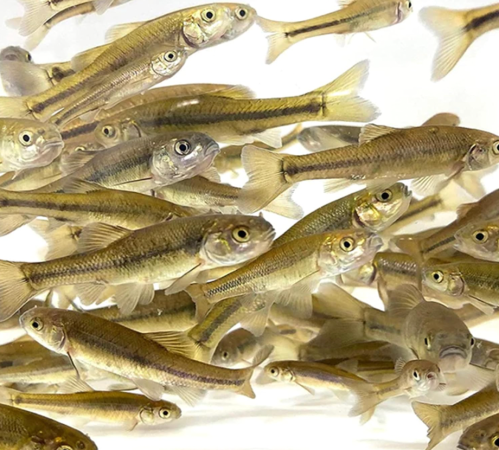
See It
Best For: Crappies, perch
Fathead minnows—sometimes labeled rosy reds—are one of the most common live bait options in tackle shops across the U.S. They’re also the smallest minnow option, rarely exceeding two inches. Though you can scale up to larger shiners if you’re looking for trophy panfish only, fatheads are a better choice if you’re after numbers of fish.
While these baits will certainly tempt bluegills, not many people want to spend the money on live minnows just for members of the sunfish family. They are prime baits, however, for crappies and yellow perch, which have larger mouths and tend to be more interested in live minnows than sunfish. One of the best ways to present a fathead is hooked through the lips on a small jighead, which is then presented below a bobber. The jighead gets the minnow to the proper depth fast, and keeps the bait oriented horizontally, which is more natural.
Leeches
Best For: Sunfish, perch
Leeches are a staple in walleye fishing, but small leeches are a killer panfish bait as well. They can be fished by themselves but are most commonly incorporated into trolling rigs or used to tip jigs. They’re widely available in bait shops throughout the Midwest, but less common elsewhere. Live leeches are an excellent choice when you’re looking for trophy bluegills and perch.
The reason live leeches fool monster bluegills and yellow perch is because they shine when fished whole. If you put a whole garden worm on your hook, it might be the ticket to catching a palm-sized bluegill, but more often, smaller fish will nip and rip at the bait until it’s gone. Therefore, it’s usually better to fish a tiny piece of worm. Leeches, on the other hand, are much tougher than worms. It’s more difficult for little fish to strip them off the hook, so if your bobber goes down and doesn’t come back up, there’s a better chance it’s because a bluegill big enough to swallow an entire leech is on the other end.
Grass Shrimp
Best For: Sunfish
If you’re a catfish angler, you understand the power of shrimp. Despite these saltwater crustaceans (obviously) not being a natural food source in freshwater lakes and river, something about their scent drives catfish wild. But bluegills are happy to get a seafood fix as well, you just need to scale down your offering.
Freeze-dried grass shrimp are easier to find than you might think. Many big-box sellers of fishing gear carry them, and they’re a great bait because they have a long shelf life and are mess-free—no dirt, no need to keep them cool, no live crickets loose in your truck. Light-wire hooks are recommended for grass shrimp, as they’re delicate like crickets, but they work great under a bobber or on the bottom.
Bread
Best For: Sunfish
In a pinch and don’t have any worms? Decided to make an impromptu trip to the pond with the kids? If you’ve got a few slices of white bread at the house you’re all set to catch any member of the sunfish family.
Crappies and yellow perch won’t be too interested in a slab of Pepperidge Farms, but go to any lake or pond, crumble up some bread and toss it out as chum, and sunfish will swarm. However, while crusty, stale bread is great as an attractant, fresh bread is better for baiting your hook. Soft, moist bread will make denser, stronger balls when you roll a piece in your hand. These stay on the hook better and last longer than a bread ball made of stale bread, which tend to quickly break apart.
Synthetic Baits

See It
Best For: Sunfish, perch, crappies
Hold on. Why would we include synthetic baits on a list of natural baits? First, to be clear, synthetic baits are not the same as lures. Second, in our modern world, factory-made baits that imitate natural baits are so common and productive that we’d be remiss if we left them off the list. Furthermore, like it or not, sometimes these fakes outshine their muses.
There are lots of synthetic panfish baits on the market, but none more prevalent than Berkley’s line of Gulp! products. They make maggots, wax worms, nightcrawlers, Earthworms, and even crickets. Choose your weapon and present it exactly like you would the real thing. There’s no need to work it like a lure—just cast and wait for the bobber to drop or the rod tip to tick. Benefits include color options, and you might find that your fish respond to the phony neon pink wax worms better than the natural ones. These baits are loaded with scent that’s arguably stronger underwater than natural scent. And, assuming you keep the lids on tight so the Gulp! liquid stays in the jar and keeps the baits hydrated, they can last for years in your tackle box.
Oddball Baits
The reality is that members of the sunfish family aren’t exactly the sharpest knives in the drawer. They’re ravenous eaters and far less discerning than crappies and perch—if it looks and smells like food, they’ll give it a crack. That said, while you don’t want to employ oddball baits over staples, you can catch sunfish on some pretty weird stuff. In fact, it can be fun to see what they won’t take a shot at, and it’s usually not much.
Over the years I’ve hooked sunnies on a tiny sliver of chewed bubble gum. I’ve used strips of ham, baloney, and roast beef from sandwiches I brought to the lake. I’ve seen them eat bits of popcorn, potato chip crumbs, shreds of gummy worm, and even tiny wads of Play-Doh. Kids especially love to see what kind of weird edibles will make that bobber go down.
The Best Panfish Lures & Flies
Soft-Plastic Jigs
Photo by Alex Robinson 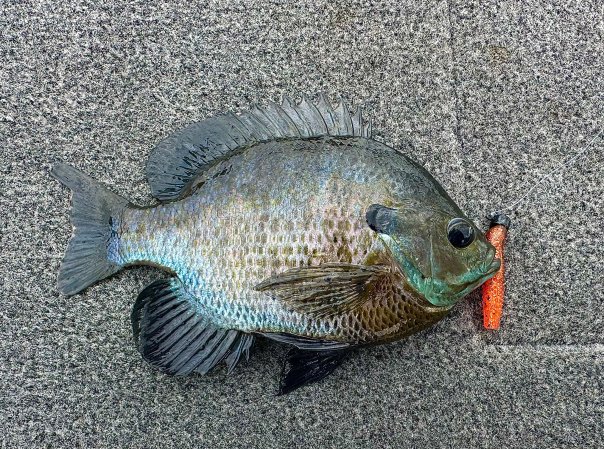
See It
Best For: Sunfish, crappies, perch
There are near endless amounts of micro soft-plastic lures on the market developed specifically for panfish. Many measure less than 2 inches, but regardless of the style of plastic you use, the delivery method is pretty standard. When rigged on a tiny jighead, these lures can be cast solo on light line, fished underneath a float or bobber, or jigged vertically on the ice. A few styles that have stood the test of time are the micro tube, and the mini curly-tail grub, but you’ll find a wide variety of unique shapes and actions on tackle shop shelves.
Read Next: Micro Ned Rigs: The Ultimate Bait for Targeting Bluegills and Bass at the Same Time
Marabou Jigs

See It
Best For: Sunfish, crappies, perch
Marabou jigs are classic lures in the panfish world. They feature a lead jighead with a body made of wrapped chenille thread and a tail of light, fluffy marabou feathers. They come in a wide range of color combinations and are generally inexpensive, which is nice when you lose them in a submerged wood pile. Their magic, however, lies in that tail, which flutters and “breathes” with the slightest twitch of the rod tip whether presented alone, vertically on the ice, or under a float.
Small Crankbaits
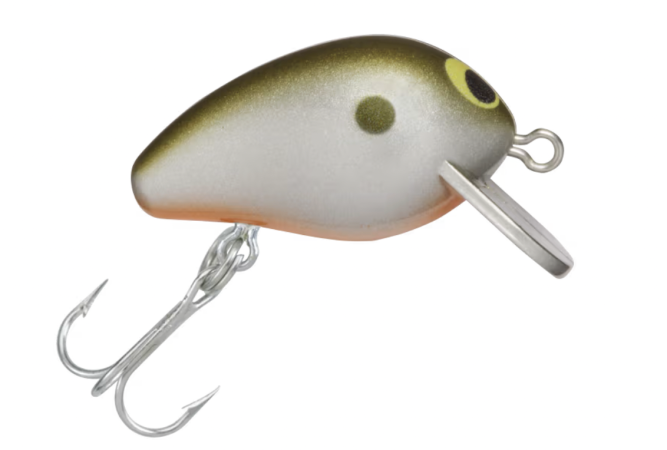
See It
Best For: Crappies, perch
Diving crankbaits like the Yo-Zuri Snap Bean and the Rapala Original Floating Minnow in a small size are crappie and yellow perch killers. Trophy bluegills will take a shot at these lures, too, but for the most part, they work better on crappies and perch because they’re more aggressive and willing to chase meals. Cast and retrieve these lures or slow-troll them from your kayak or boat to cash in. Just keep in mind their treble hooks can get stuck in wood and vegetation more easily than lures with single hooks.
In-Line Spinners
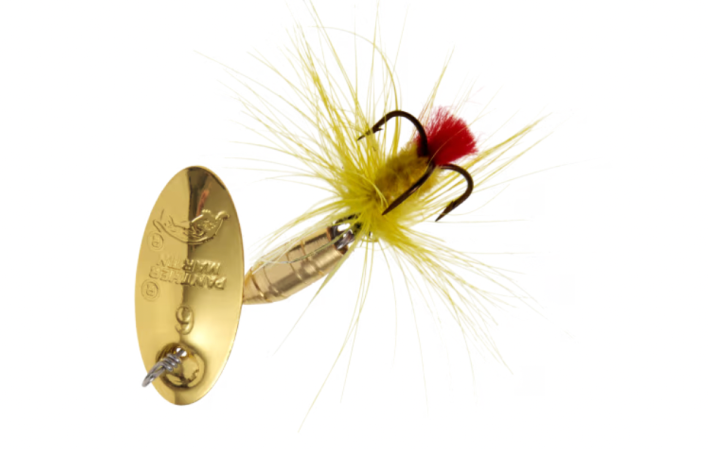
See It
Best For: Sunfish, crappies, perch
In-line spinners like a classic Panther Martin or Mepps Aglia in small sizes are great for all panfish. In colder water, crankbaits and jigs can be fished more slowly and with subtler finesse, but spinners require constant reeling to maintain their flash and vibration. This makes them shine in the summer when the water is warmer, and the fish are more willing to chase down a meal. Spinners with feather- or hair-dressed tails in red or orange often draw more strikes.
Popping Bugs & Nymphs
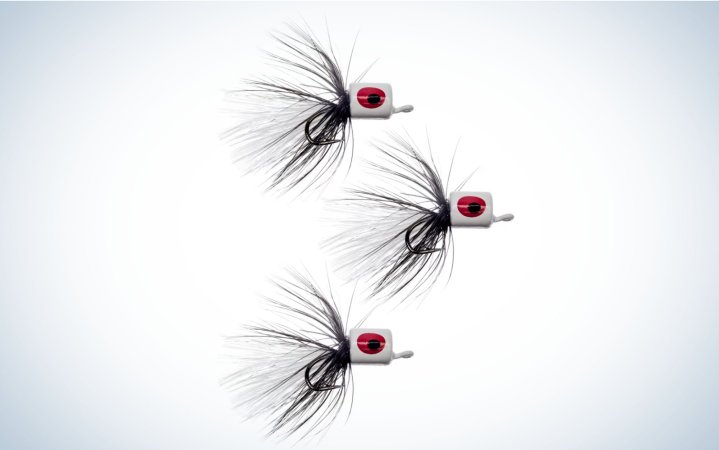
See It
Best For: Sunfish
If you prefer to target fish with a fly rod, nothing beats heading to the bluegill pond with a pocket full of popping bugs. These tiny foam or wood flies imitate a wide variety of terrestrial insects like grasshoppers and dragon flies. The “plop” they make when they hit the surface is often enough for a bluegill to hit them instantly, but if that doesn’t work, a slight twitch of the rod will make their rubber legs quiver to seal the deal. If the water is cooler and the fish don’t feel like rising for a meal, trout nymphs like the hare’s ear or pheasant tail will get gobbled in a flash.
Final Thoughts on the Best Baits for Bluegills and Panfish
Picking the best bait for bluegills and other panfish all comes down to how you want to fish. If it’s most important to fill up the stringer, then it’s hard to beat live bait. But if you prefer the challenge of chasing trophy panfish on artificial lures, then this list will also give you plenty of options to choose from.
Read the full article here



